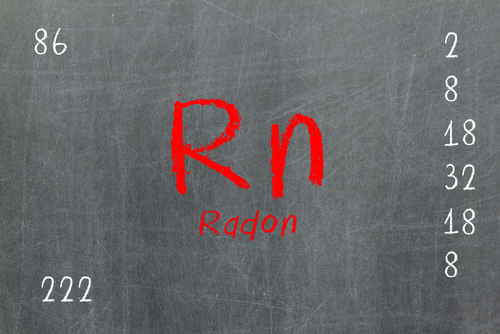 |
7 Things Everyone Needs to Know About Radon Risk
1. Radon is a radioactive element that is derived from the decay of radium (uranium) that occurs in almost all soils. At normal temperatures, radon is an extremely toxic, colorless, invisible gas that moves up through the ground to the air above and can enter buildings through cracks and holes in the foundation or via well water. Once inside, radon is trapped and can build up and become a health threat to building inhabitants.
2. Radon atoms decay by emitting alpha particles. The decay product is also radioactive and attaches to tiny dust particles in indoor air that are easily inhaled into the lungs and can adhere to the lining of the lungs. During the process of decay, the particles emit alpha radiation, which has the potential to damage cells in the lungs, disrupting the deoxyribonucleic acid (DNA) of lung cells and leading to lung cancer.
Join us for an in-depth webinar on Clean Air Act Compliance: How to Meet Risk Management Plan & OSHA Process Safety Management Requirements in Light of Executive Order 13650 on September 24. Register now.
3. There is no known safe level of radon exposure, however, EPA’s action level for radon mitigation is when the level of radon reaches or exceeds 4 picocuries per liter (pCi/L). The EPA also recommends that mitigation be considered when radon levels are between 2 pCi/L and 4 pCi/L. For comparison, the average U.S. home radon concentration is 1.3 pCi/L, and the average outdoor air radon concentration is 0.4 pCi/L or one 10th of EPA’s 4 pCi/L action level.
4. All buildings are susceptible to radon regardless of age, whether they are well-sealed or drafty and whether they have a basement or not. In addition, radon occurs everywhere in the United States at varying levels state to state, and even home to home. As a result, the U.S. Surgeon General and the EPA recommend that all homes be tested for radon regardless of the structure or the geographic location.
5. Radon is the leading cause of lung cancer in nonsmokers as well as the leading environmental cause of cancer in North America. Reducing radon at the source is the only way to protect nonsmokers from radon-related lung cancer.
Live Webinar: Clean Air Act Compliance
We will provide a clear understanding of the “management of change” requirements for both, strategies for determining compliance, and recommendations for keeping all documents up to date. Register now.
6. Radon risk is reduced when homes, schools, and daycare facilities that test high for radon are mitigated, and when new buildings are built using radon-resistant new construction (RRNC) techniques. At this time, however, few localities mandate radon testing, mitigation, or radon-resistant construction. For example, regarding existing homes, less than 30 percent of those tested are tested outside of a real estate transaction. In most cases, the decision not to test is based on the homeowner’s preconception that the cost is greater than the return on investment (ROI) and a lack of understanding about the seriousness of the risk from radon exposure.
7. In 2011, the EPA, in cooperation with eight other federal agencies overseeing housing, health, human services, defense, veterans, energy, agriculture, and general services, issued the Federal Radon Action Plan to protect human health from radon exposure. The comprehensive, multiyear plan is using the agencies’ direct or indirect influence over an estimated 7.5 million homes, schools, and daycare centers to leverage the 10-year Healthy People 2020 national agenda with the following radon risk reduction objectives:
- Have an operating radon mitigation system in 3.1 million (30 percent) of the estimated 9.2 million homes with an elevated radon level.
- Increase to 100 the percentage of new single-family homes constructed with radon-reducing features in high-radon potential areas.
